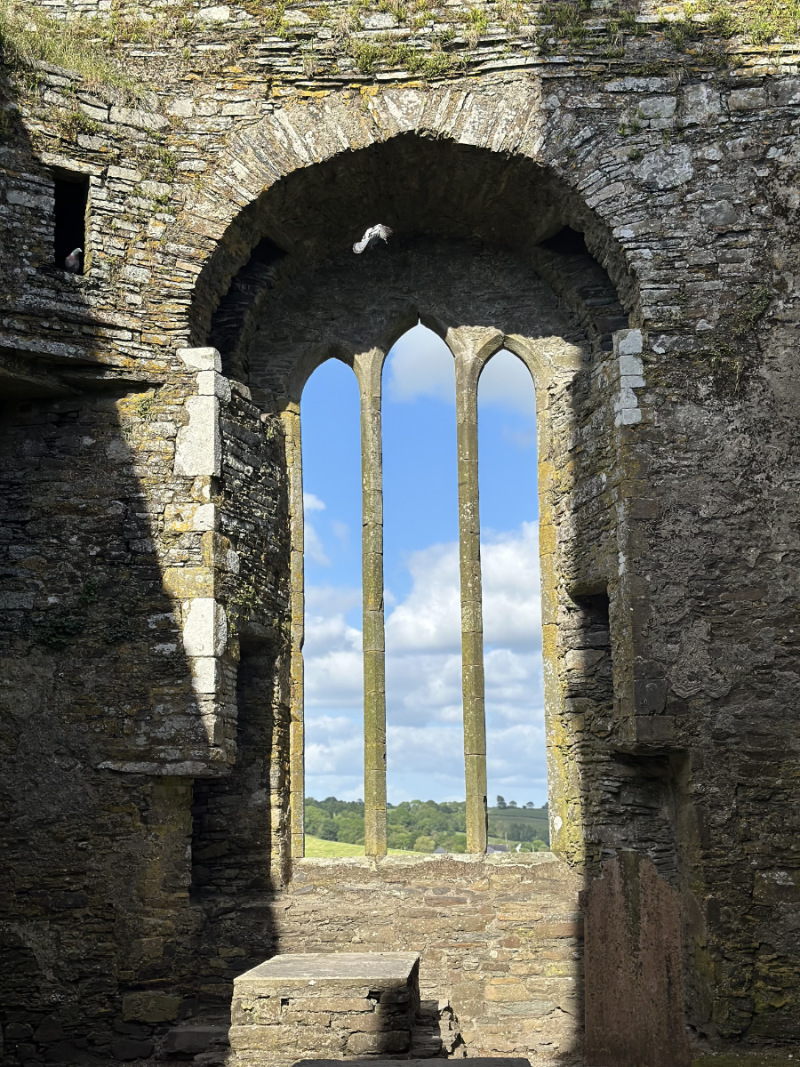The Timoleague Friary
The Timoleague Friary
The heart of West Cork is home to many ancient monuments.
 If you find yourself roving the country trails of West Cork, you will discover that there is no shortage of breathtaking ancient architecture. From castles to stone circles, you can turn over a rock in this country and uncover an ancient Celtic secret, once beheld by no one. One of my favourite places for such discoveries is the Timoleague Friary. The largest medieval ruin in West Cork sits atop a cliff’s edge and gazes out over the shores of the Argideen River. The magic of this ruin is bountiful, rooted in spirit and commanding with a sovereign presence. If you take your time to traverse this sacred place and dig deeper into the history of the friary, you may come away with more than just some spectacular travel photos (which may be enough for some, and no shame in that!).
If you find yourself roving the country trails of West Cork, you will discover that there is no shortage of breathtaking ancient architecture. From castles to stone circles, you can turn over a rock in this country and uncover an ancient Celtic secret, once beheld by no one. One of my favourite places for such discoveries is the Timoleague Friary. The largest medieval ruin in West Cork sits atop a cliff’s edge and gazes out over the shores of the Argideen River. The magic of this ruin is bountiful, rooted in spirit and commanding with a sovereign presence. If you take your time to traverse this sacred place and dig deeper into the history of the friary, you may come away with more than just some spectacular travel photos (which may be enough for some, and no shame in that!).
There was once a saint called Saint Molaga who lived during the 7th century. He was a native of the Fermoy area and was a missionary, a beekeeper, and a gifted healer. It is said that he possessed incredible powers—in some historical accounts, he healed the sick and even brought souls back to the world of the living. One account of his childhood tells of how, when the time came for him to be baptized, a well sprung up at the point where he stood, and he was baptized then and there. This well is now known as the Molaga Well, located in Baile an Bhaoithin, County Kerry. Although it is little more than a ruin now, covered in plant life and its waters enfolded in algae, the legend of this tale still lives.
Timoleague comes from the Irish name “Tigh Molaga,” meaning “house of Molaga.” The friary was built around 1307–1316 on the site of a monastic settlement founded by Saint Molaga and stood strong for many years until it was besieged and burnt in 1642 by crown forces during the Irish Confederate War. It was later taken back by local families who buried their loved ones within the friary ruins. The sacred air of the castle remains now, renewed by the reverence of those who come to honor this place for all its richness, history, and enchantment.
